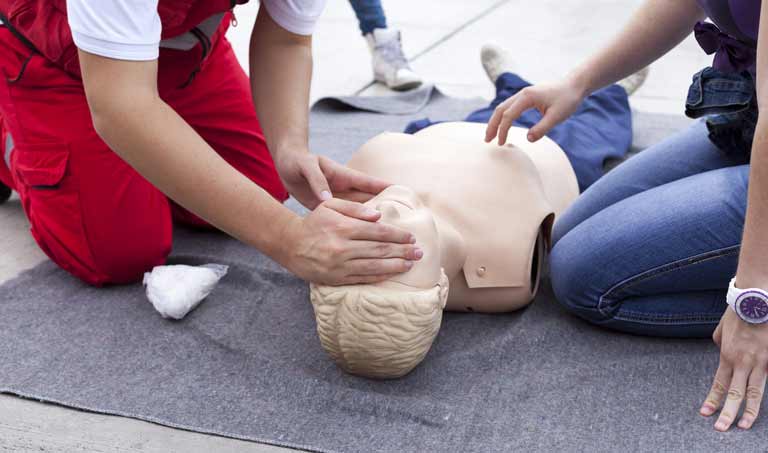Introduction
In today's fast-paced workplace, security is vital. Organizations are progressively acknowledging the value of developing a safe area for workers. One of one of the most vital components of work environment safety and security training is first aid and mouth-to-mouth resuscitation (Cardiopulmonary Resuscitation) training courses. These programs not just encourage employees with necessary life-saving abilities yet additionally promote a society of safety and security within the organization. In this article, we will look into the myriad reasons why workplace safety and security training need to include emergency treatment and CPR training courses, highlighting their relevance in improving workplace safety.
Why Work environment Safety and security Training Should Consist Of First Aid and Mouth-to-mouth Resuscitation Courses
The combination of first aid and CPR programs into workplace safety training has far-reaching benefits. They furnish workers with the understanding and skills needed to respond successfully to clinical emergencies, minimize recovery time for injured people, and possibly conserve lives. In addition, having trained workers on-site can impart self-confidence among workers and comfort them that their well-being is prioritized.
Understanding Initial Aid
First help describes the instant care offered to an individual suffering from a small or severe health problem or injury up until professional clinical aid shows up. Recognizing fundamental first aid concepts can make a substantial distinction in hltaid012 Child Care First Aid Course emergency situations.
Key Elements of First Aid
Assessment: The capability to examine a situation rapidly can aid determine the proper actions needed. Stabilization: Comprehending exactly how to support a harmed individual stops more harm. Communication: Properly interacting with emergency situation services is essential for timely assistance.The Significance of CPR
CPR is a life-saving strategy used in emergency situations when a person's heartbeat or breathing has actually quit. It involves breast compressions and rescue breaths to preserve blood flow and oxygenation up until specialist help arrives.
How CPR Works
- Chest Compressions: These help distribute blood throughout the body. Rescue Breaths: These supply oxygen to the lungs.
Benefits of Emergency treatment and CPR Certification
Obtaining an emergency treatment certificate or completing CPR courses includes numerous benefits, both for people and organizations.
Enhanced Staff member Confidence: Workers feel a lot more protected knowing they have life-saving skills. Reduced Recuperation Time: Quick reaction through first aid can result in much better results for damaged individuals. Compliance with Regulations: Lots of industries need certified employees as component of their health and wellness regulations.Creating a Society of Security Through Training
Implementing emergency treatment and CPR training fosters a culture that focuses on worker health.
Encouraging Teamwork
Training sessions frequently entail team-building workouts that boost cooperation amongst employees.

Building Depend on In between Workers and Management
When management purchases worker training, it reveals dedication to their wellness, causing increased morale.
First Aid Surges vs. Mouth-to-mouth Resuscitation Courses: What's the Difference?
While both types of training courses are necessary, they focus on various skill sets.

First Help Courses
These training courses cover a wide variety of subjects past simply heart emergency situations, consisting of:

- Wound care Burns Choking
CPR Courses
CPR courses especially focus on techniques related to cardiac arrest circumstances, highlighting:
- Adult CPR Child/ baby resuscitation Use of an Automated External Defibrillator (AED)
Choosing the Right Training Provider
Not all training service providers are created equivalent; as a result, choosing one that meets your company's demands is critical.
Accreditation Matters
Ensure that your chosen company provides accredited training courses recognized by appropriate authorities.
Instructor Experience
Consider instructors' certifications; knowledgeable instructors usually supply richer knowing experiences through real-world examples.
Incorporating Emergency treatment right into Workplace Safety Policies
Organizations need to integrate first aid requirements into their wider safety and security policies for detailed coverage.
Regular Training Updates
Conducting regular refresher courses makes sure that understanding remains present amongst employees.
Creating Emergency Action Plans
Having clear plans in position can direct skilled workers during emergencies.
Legal Implications of First Aid Training in the Workplace
Employers have lawful duties regarding office safety and security; applying emergency treatment training can aid reduce dangers associated with non-compliance.
Negligence Claims
Failure to give appropriate training might leave companies vulnerable to legal actions if an occurrence takes place as a result of lack of preparedness.
FAQ Section
What is included in a regular first aid course?- A common first aid course consists of direction on examining injuries, treating wounds, taking care of burns, handling choking events, and performing mouth-to-mouth resuscitation if necessary.
- Most CPR programs last between 4-- 6 hours depending on whether it's fundamental or innovative training.
- While not always lawfully mandated, having accredited employee can considerably improve workplace safety standards.
- Many accredited companies offer on-line revival options for emergency treatment certifications that include analyses using video conferencing.
- Yes, industries such as construction, healthcare, education and learning, and production frequently have regulatory demands demanding trained employees on site.
- It's suggested that employees participate in refresher courses every 2 years or faster if there are considerable adjustments in treatments or regulations.
Conclusion
To sum up, integrating emergency treatment and CPR into workplace safety training is not just an option however a necessity in today's work environments where emergency situations can occur at any moment. Organizations advantage profoundly from having trained workers all set to react properly throughout crises while cultivating an ambience where employee health takes precedence over all else. Consequently, it ends up being noticeable why work environment safety and security training must include emergency treatment and CPR courses-- they save lives while promoting an aggressive strategy towards health and safety requirements within companies throughout numerous sectors.
By prioritizing such vital training campaigns-- first aid certificates obtained with trusted suppliers together with useful hands-on experience-- business can considerably improve their general emergency situation preparedness levels while hltaid009 CPR Course likewise developing more powerful groups with the ability of dealing with any kind of scenario head-on!